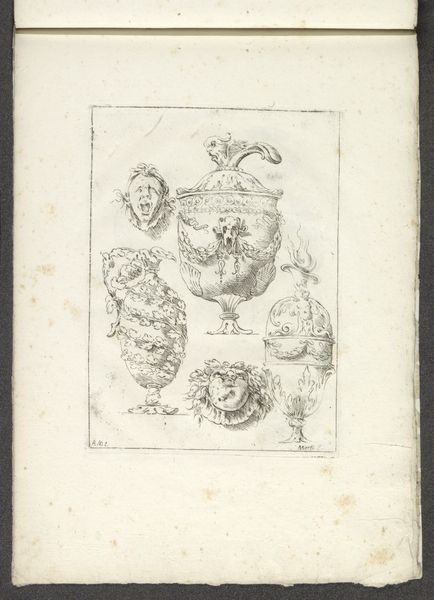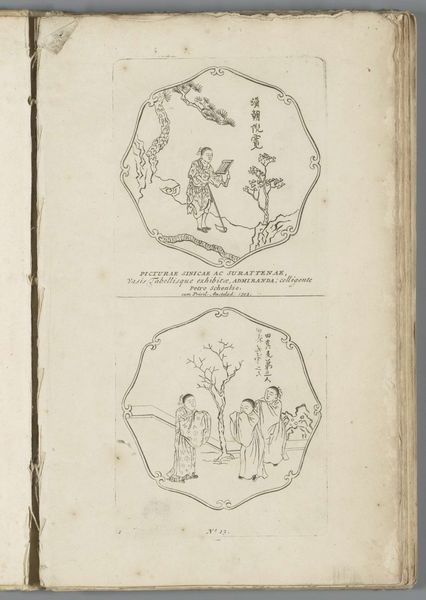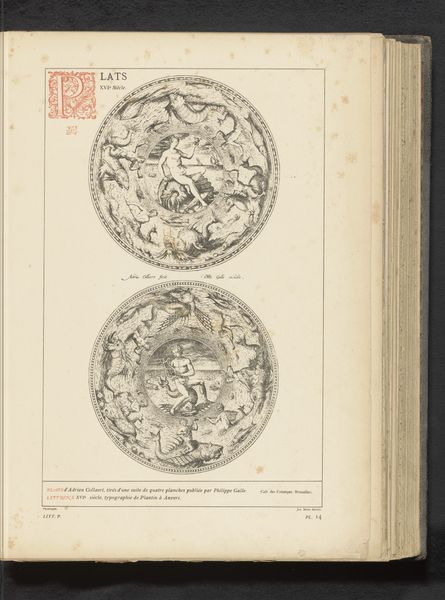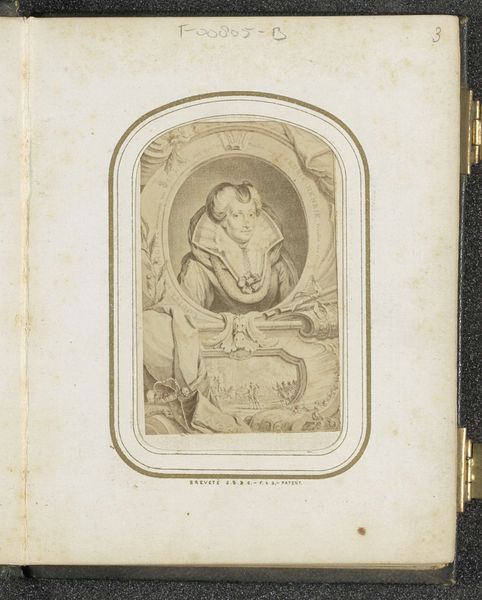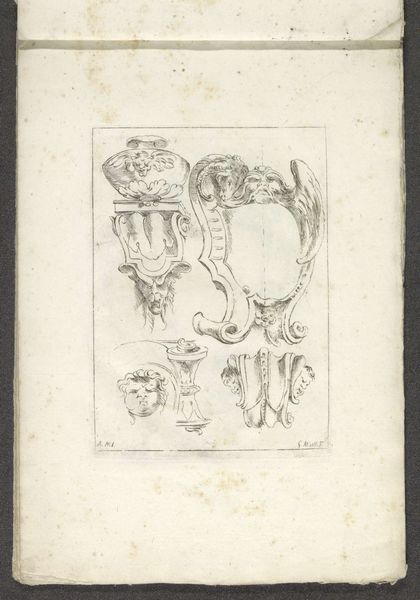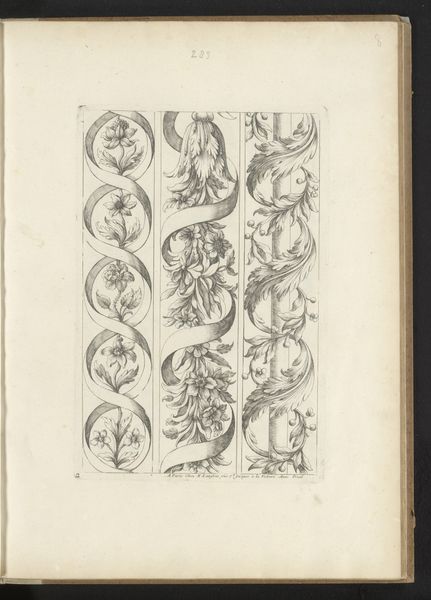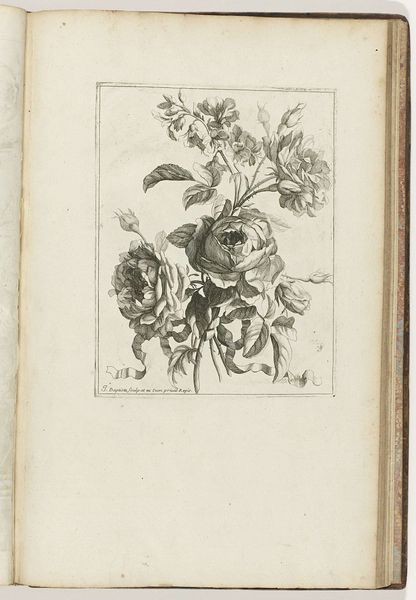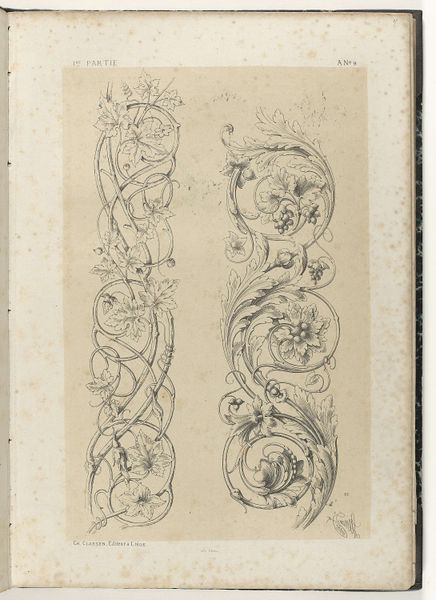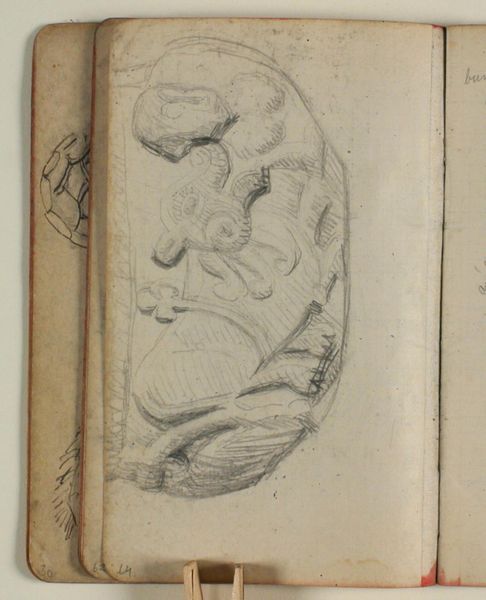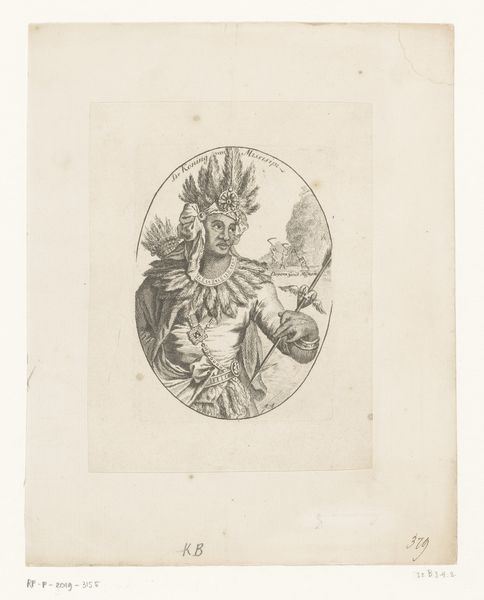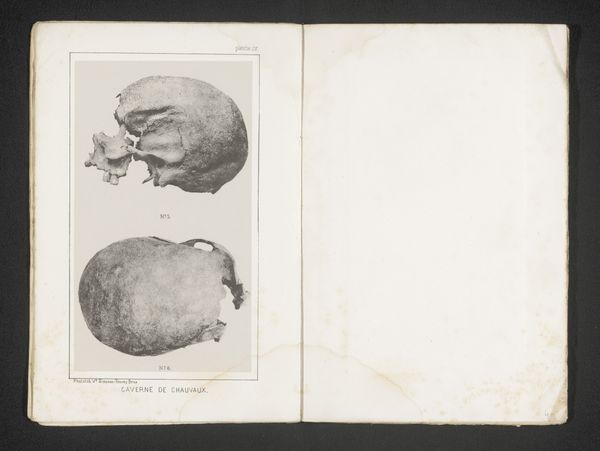
In retraite levend op de Oostelijke berg (?) / Trouw tot in de dood te Shou-yang 1702
0:00
0:00
drawing, paper, ink
#
drawing
#
narrative-art
#
asian-art
#
landscape
#
figuration
#
paper
#
ink
Dimensions: height 270 mm, width 115 mm
Copyright: Rijks Museum: Open Domain
These undated etchings by Pieter Schenk depict scenes from Chinese stories, rendered with a distinctive European interpretation of Chinese aesthetics. They reflect the growing cultural exchange between Europe and China during the late 17th and early 18th centuries, shaped by increased trade and missionary activities. The images likely draw on popular narratives, reflecting values of loyalty and reclusion, themes that resonate across cultures. Notice how Schenk's technique, with its delicate lines and composition, attempts to capture what Europeans imagined Chinese art to look like. These prints were made in Amsterdam, a major center for the production and distribution of images at the time. They catered to a European audience eager for knowledge, or perhaps simply fantasies, about distant lands. Understanding the social and economic context in which these images were produced—the demand for exotic and orientalist imagery—is crucial. Researching the history of Dutch-Chinese trade relations, as well as the circulation of Jesuit missionary accounts, helps us interpret the cultural significance of Schenk’s work. The meaning of art is always contingent on social and institutional contexts.
Comments
No comments
Be the first to comment and join the conversation on the ultimate creative platform.
